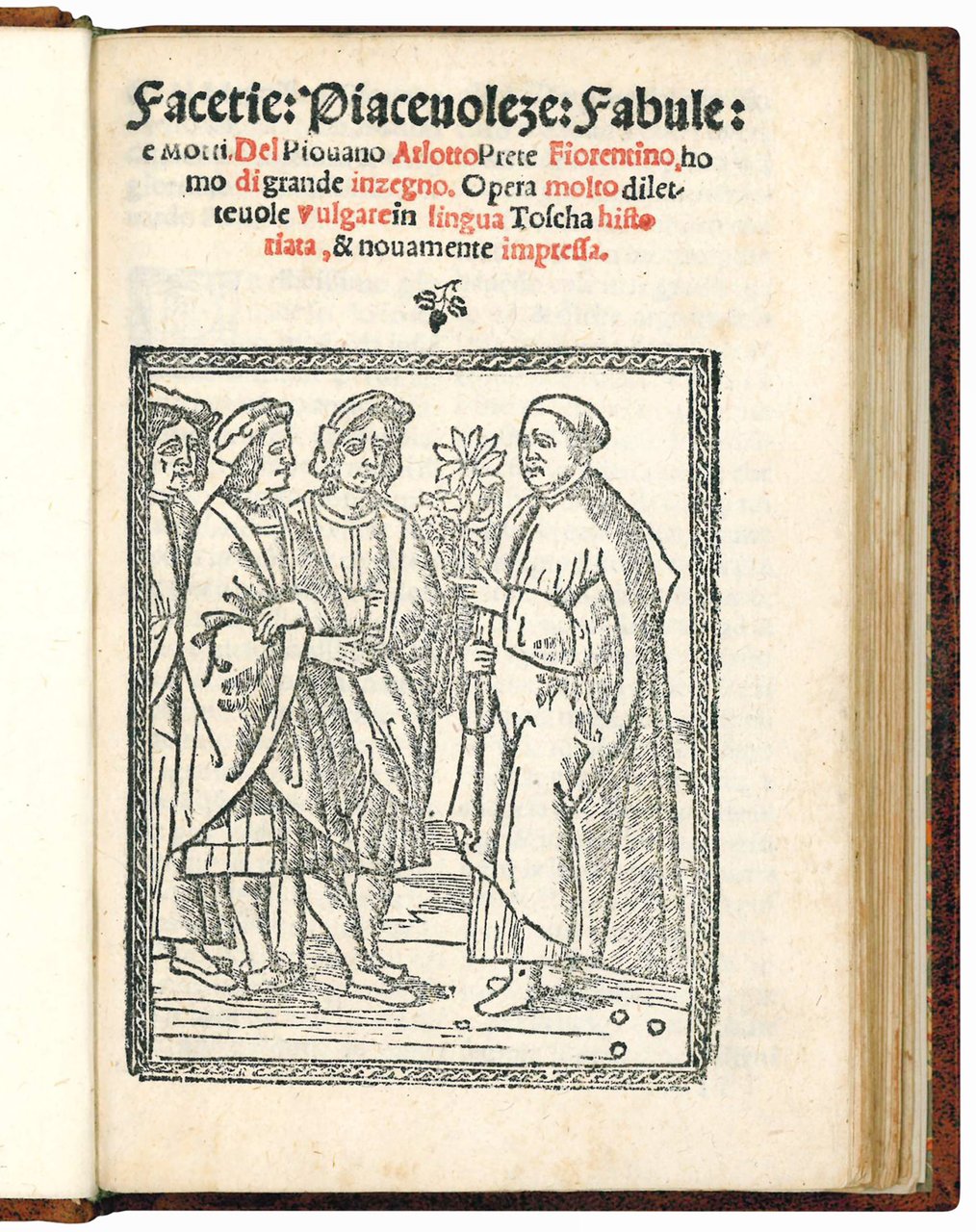
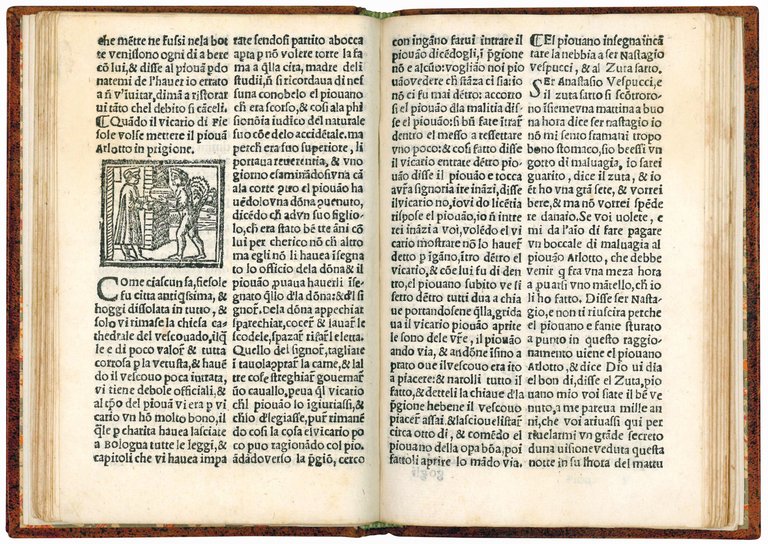
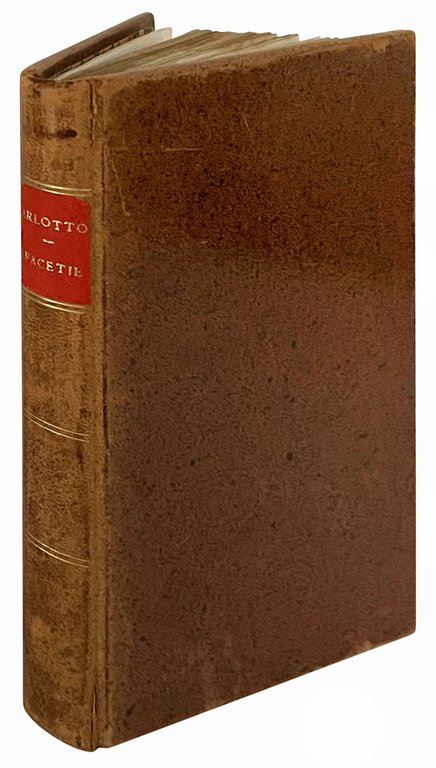
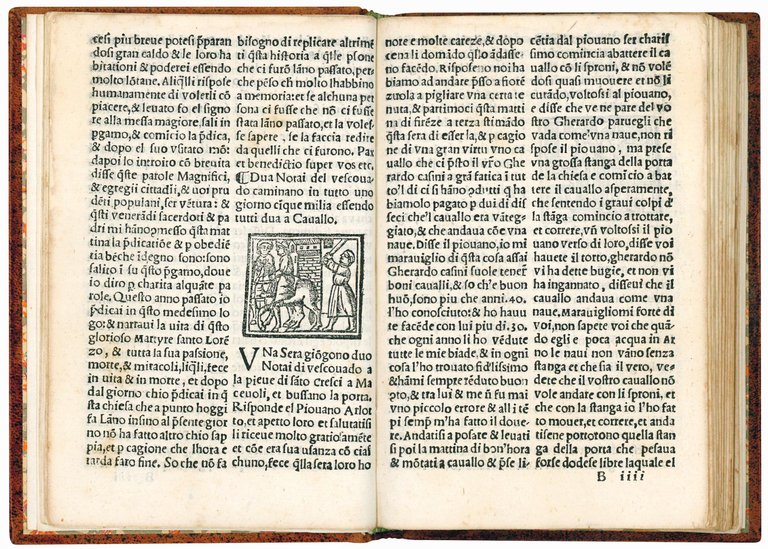
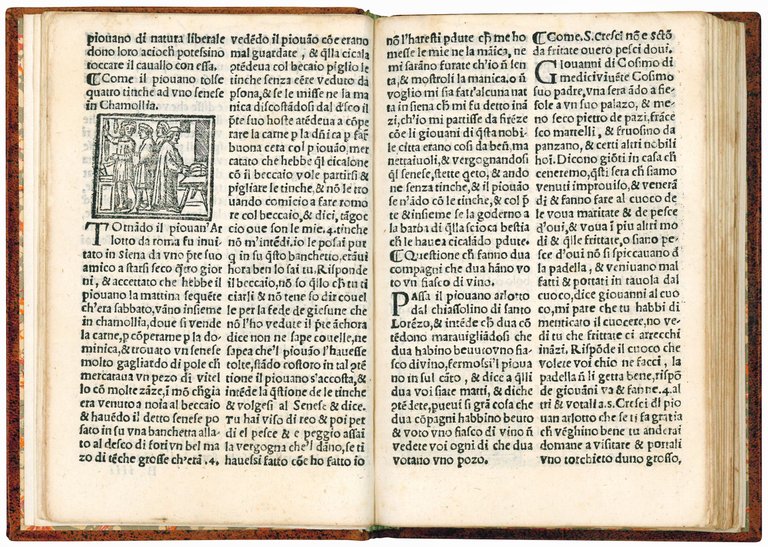
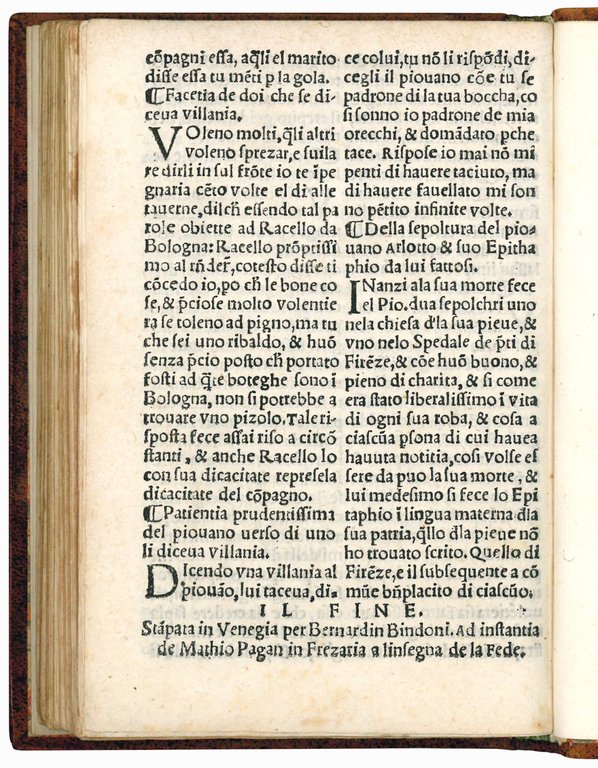
Libros antiguos y modernos
ARLOTTO, Piovano (Arlotto Mainardi, 1396-1484)
Facetie: Piacevoleze: Fabule: e Motti. Del Piovano Arlotto Prete Fiorentino, homo di grande inzegno. Opera molto dilectevole vulgare in lingua Toscha hystoriata, & novamente impressa. Colophon: Sta[m]pata in Vinegia per Bernardin Bindoni. Ad istantia de Mathio Pagan in Frezaria a l'insegna de la Fede
Bernardino Bindoni for Matteo Pagano, 1542-1562 ca.
2400,00 €
Govi Libreria Antiquaria
(Modena, Italia)
Los gastos de envío correctos se calculan una vez añadida la dirección de envío durante la creación del pedido. El vendedor puede elegir uno o varios métodos de envío: standard, express, economy o in store pick-up.
Condiciones de envío de la Librería:
Para los productos con un precio superior a 300 euros, es posible solicitar un plan de pago a plazos al Maremagnum. El pago puede efectuarse con Carta del Docente, Carta della cultura giovani e del merito, Administración Pública.
Los plazos de entrega se estiman en función de los plazos de envío de la librería y del transportista. En caso de retención aduanera, pueden producirse retrasos en la entrega. Los posibles gastos de aduana corren a cargo del destinatario.
Pulsa para saber másFormas de Pago
- PayPal
- Tarjeta de crédito
- Transferencia Bancaria
-
-
Descubre cómo utilizar
tu Carta del Docente -
Descubre cómo utilizar
tu Carta della cultura giovani e del merito
Detalles
Descripción
Extremely rare edition issued by Bernardino Bindoni, who printed the text also in 1538 and 1549. Matteo Pagano, who financed the edition, was active as an editor and a typographer in Venice between 1542 and 1563. Bernardino Bindoni, the brother of Alessandro, Benedetto and Agostino, ran a printing press in Venice from 1533 to 1551 and again in 1562. The date of printing can therefore be placed between 1542 and 1563. This edition contains the same dedication by Bernardo Pacini to Pietro Salviati, as well as the same short biography of Piovano Arlotto, that appear in the earlier editions.
The famous Motti e facezie (‘Mottoes and jokes') was apparently written by a friend of Arlotto's who deliberately remained anonymous and only emerged in seventeen of the “facezie”. The novelty of the Motti, according to a scheme borrowed from humanistic biographies, is that it places the life of the protagonist, Arlotto, at the centre of a book of humorous tales and jokes. The Motti was compiled between 1450 and 1470. The anonymous collector mixed biographical events with themes and topoi of fourteenth-century Tuscan literature, particularly the Decameron, the Trecentonovelle by Franco Sacchetti, the Liber Facetiarum by Poggio Bracciolini, the Pecorone by Ser Giovanni Fiorentino, and the Dialogo di Marcolfo e Salomone. Moreover, the collection's uniqueness lies in its reinterpretation of high literature for a broader audience, employing a lexical style influenced by Tuscan vernacular and popular traditions. Despite the fact that it is not improbable that an early core of the collection may have originated from a private book in which Arlotto jotted down the most curious circumstances of his life, the fact remains that he is the protagonist and not the author of the Motti.
An early group of around 80 facetious tales circulated in manuscript form in Florence, influencing Poliziano and Pulci. Later, some overly licentious pieces were excluded to make way for more edifying ones. Following Arlotto's death, between 1485 and 1488 an anonymous friend compiled a collection of Motti e facezie accompanied by a short biography of Arlotto. The first group of 80 tales was joined by a second group (81-174), essentially drawn from the Tuscan novella and joke tradition of Sacchetti and Bracciolini. During this period, Arlotto lost all historical connotations and became an example of the perfect combination of real character and literary projection. Textual layering and the existence of multiple versions explain the collection's lack of stylistic homogeneity. A third addition was made possibily by a different hand. The aim was to provide posterity with a more edifying religious portrait of Arlotto and to present him as a philosopher. This addition included more tales (175-192 and 202-217), which were hastily and passively taken from a florilegium entitled Libro de la vita de' filosfi e delle loro eleganti sentenze, estratte da Diogene Laerzio e da altri antichissimi autori, which is a vulgarisation of Walter Burleigh's Liber de vita et moribus philosophorum (fl. 1275–1357).
The manuscript and printed traditions clearly demonstrate the composite nature of the work. The editio princeps, from which the numerous later editions derive, was edited in Florence by Bernardo Pacini for Bernardo Zucchetta under the title Motti et Facetie del Piovano Arlotto Prete Fiorentino Piacevole Molto between 1512 and 1516 (cf. Y. Yoneyama, A profile of the “Mottoes and jokes of Piovano Arlotto”, in: “Intercultural Studies”, XXVIII, 2003, pp. 77-108).
Arlotto Mainardi, also known as Arlotto il Pievano or Piovano Arlotto, was b

